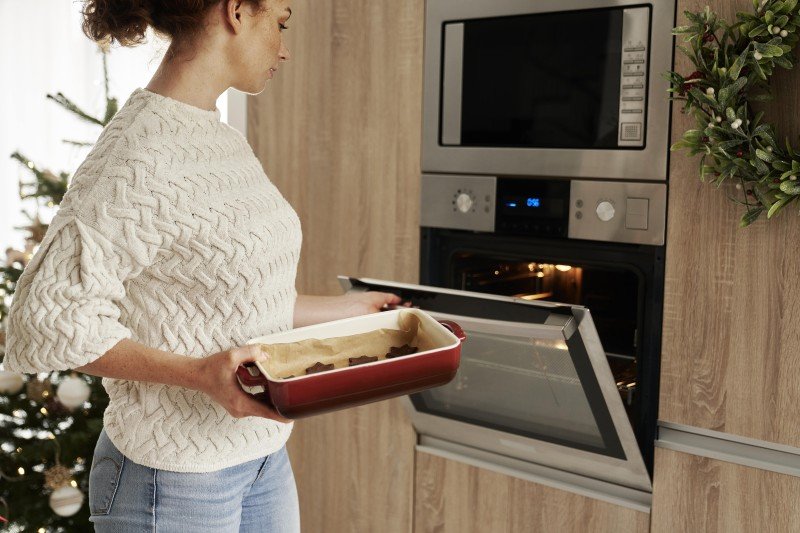Why You Should Concentrate On Improving Oven And Hob
The Complete Guide to Ovens and Hobs: Choosing the Right Appliances for Your Kitchen
When it comes to creating culinary masterpieces, the importance of quality kitchen devices can not be overstated. Ovens and hobs are the heart of any kitchen, making it possible for home cooks and expert chefs alike to develop, bake, and sauté delicious meals. Understanding the different kinds of ovens and hobs, in addition to their functions and performances, is crucial for making informed buying decisions. This post uses an in-depth take a look at ovens and hobs, helping you navigate the choices available so that you can boost your kitchen's performance and flexibility.
Comprehending Ovens
Ovens are vital for cooking and baking and come in numerous types to meet diverse cooking requirements. Here is an introduction of the most common kinds of ovens:
1. Standard Ovens
Traditional ovens work by heating the air inside with gas or electric elements. They are perfect for baking cakes, roasting meats, and cooking casseroles.
2. Convection Ovens
These ovens utilize a fan to flow hot air, offering an even temperature level throughout, which can considerably decrease cooking times. They are ideal for baking cookies or roasting vegetables.
3. Microwave Ovens
Microwaves prepare food quickly using electro-magnetic radiation. They are perfect for reheating leftovers or defrosting frozen foods but are not suitable for browning or crisping.
4. Wall Ovens
Including a wall oven into your kitchen design can conserve space and produce a smooth visual. They function much like traditional or convection ovens however are built into the wall for simple gain access to.
5. Variety Ovens
These ovens integrate stovetop burners with an oven, providing flexibility for those who choose a single device for all cooking requirements.
Type
Cooking Method
Best For
Conventional
Electric/Gas
Baking, roasting
Convection
Air circulation
Quick cooking, even baking
Microwave
Electro-magnetic
Reheating, defrosting
Wall Ovens
Electric/Gas
Space-saving, smooth style
Variety Ovens
Electric/Gas
Flexible cooking
Checking out Hobs
Hobs, likewise referred to as cooktops or stovetops, provide the surface to prepare pans straight over a heat source. Like ovens, hobs can be found in numerous types, which can be classified as follows:
1. Gas Hobs
These hobs utilize a flame for cooking and provide instant heat control. They are preferred by lots of chefs for their responsiveness and accuracy.
2. Electric Hobs
Electric hobs utilize coils or flat surface areas to heat pans. They provide a consistent heat source, but they may take longer to cool down compared to gas hobs.
3. Induction Hobs
Induction hobs utilize electro-magnetic energy to heat pots and pans directly, making them highly effective and quicker to cook. They are likewise easier to clean as the surface area stays relatively cool.
4. Strong Plate Hobs
These are older technology that uses solid metal plates to offer heat. Ovens On Sales are durable but are less efficient than modern options.
Type
Heat Source
Advantages
Drawbacks
Gas Hobs
Flame
Instant heat control
Requires gas connection
Electric Hobs
Electric coils
Consistent heat
Slower to cool off
Induction Hobs
Electro-magnetic
Quick cooking, energy-efficient
Needs suitable pots and pans
Strong Plate Hobs
Solid metal plate
Sturdiness
Less effective
Selecting the Right Appliances
Choosing the best oven and hob for your kitchen involves considering various factors:
1. Space and Layout
Procedure your kitchen location to identify the size and positioning of the oven and hob. Ensure there is sufficient ventilation, specifically for gas appliances.
2. Cooking Style
Think about how often you prepare and the type of meals you prepare. A convection oven might match avid bakers, while someone who frequently stir-fries may choose an induction hob.
3. Energy Source
Pick the energy source that best fits your lifestyle. Gas uses immediate control, while electric and induction hobs offer ease of usage and are typically more energy-efficient.
4. Spending plan
Identify your spending plan for kitchen devices. Ovens and hobs vary significantly in cost, depending on functions and brands. Focus on vital features that meet your needs.
5. Functions
Look for functionalities such as self-cleaning alternatives, clever technology compatibility, particular rack configurations for ovens, and safety features for hobs.
Often Asked Questions (FAQs)
Q1: What is the difference in between a standard oven and a convection oven?A1: Conventional ovens warm the air inside without fans, while convection ovens make use of a fan to circulate hot air for more even cooking. Q2: Can I utilize aluminum pots and pans on induction hobs?A2: No, induction hobs need ferrous (magnetic )products like cast iron or stainless steel to work effectively. Q3: Do gas hobs heat faster than electric hobs?A3: Yes, gas hobs provide immediate heat, making them quicker for cooking compared to electric hobs. Q4: Is it safe to utilize a microwave oven?A4: Yes, when used according to the manufacturer's directions, microwave are thought about safe for cooking.
Q5: How typically ought to I clean my oven and hob?A5: For optimum efficiency, tidy your oven routinely, specifically after spills. Hobs need to be cleaned down after each use
to avoid accumulation. Ovens and hobs
are essential elements of a fully equipped kitchen. Comprehending the various types, their functionalities, and the factors to consider associated with acquiring
them can drastically enhance cooking experiences. Whether one is a casual home cook or an expert chef, investing time in choosing the ideal devices can lead to culinary success and complete satisfaction in the kitchen. By focusing on features that line up with your cooking design, energy sources that fit your home, and budget plan factors to consider, you can create an efficient work space that influences cooking imagination. 